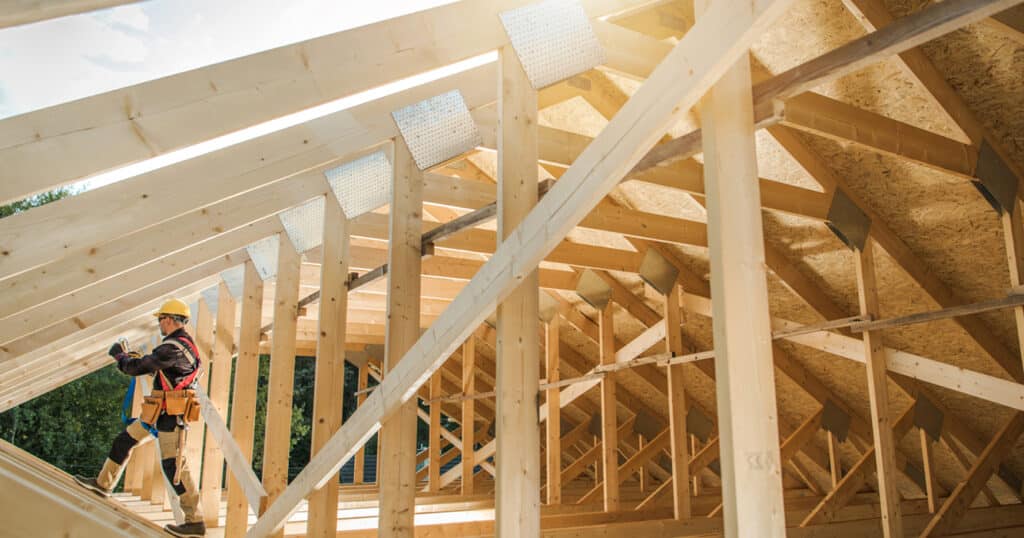6 of the Latest Energy Efficient Construction Techniques for 2022
Energy efficiency is important for homeowners and construction firms alike. But how are builders boosting energy efficiency? Here are 6 of the latest energy-efficient construction techniques.

Guest Contributor
Energy efficiency is important for homeowners and construction firms alike. Shifting climate conditions begin to cause serious concern, coupled with rising costs.
But how are engineers and builders seeking to boost energy efficiency? And what construction techniques are they deploying?
Read on to learn more about 6 of the latest energy-efficient construction techniques. Discover why this trend is becoming so important in the United States and across the world.
Why Energy Efficiency Matters
Energy efficiency matters for many reasons.
Minimizing energy consumption and wastage helps to reduce carbon emissions. These emissions are damaging our planet. This same efficiency can save the average American huge amounts of money.
Leadership in Energy and Environmental Design (LEED) certifies homes globally. These homes use between 20% and 30% less energy than their non-certified counterparts.
In some cases, certified homes use as much as 60% less energy.
Making Homes More Energy Efficient
Americans are becoming more engaged with sustainability and efficiency issues.
Gen Z and Millennials are likely to support environmental action. Their Gen X and Boomer counterparts are less committed. However, 63% of all Americans agree that stricter environmental regulations are “worth the cost.”
Trends suggest that energy-efficient construction techniques may become more prevalent soon. Legislation may even mandate it.
Engineering and development companies need to adopt energy-efficient building techniques ASAP. Saving money and reducing environmental impact are major benefits.
You might as well get a head start on potential regulatory changes, as well.

Energy Efficient Construction Techniques for This Year and Beyond
Here are 6 energy-efficient construction techniques that are shaping the industry today.
Building Orientation and Structure
When thinking of solar energy, we tend to think of panel systems. While these solar panels are important for providing sustainable energy, solar has options.
With proper orientation, buildings can leverage passive solar power. If they absorb sunlight and heat energy, the home can cool and warm itself all year.
- Orient the building so windows are no more than 30 degrees off due south.
- Ensure that sunlight is not blocked during the colder months.
- Overhangs or other structural elements can provide protection from the sun during summer.
This can reduce the need for other types of heating or cooling.
Developing Thermal Mass
The idea of external insulation is not new. Homeowners have been adding insulative materials to their spaces for decades. This helps to improve the home’s energy efficiency.
While this helps, construction teams can do more to reduce energy consumption.
For example, thermal mass is the ability to store heat. Focusing on developing thermal mass within the structure will save energy.
Materials can reduce wasted heat energy, curbing CO2 emissions in the process. Heavy-duty masonry, insulating concrete forms (ICFs), lumber, and logs, are some examples.
More unusual materials like hay bales can even offer effective insulation. Even green roof construction has high insulation benefits for homes.
Earth-sheltering is building new homes underground or on the sides of hills. It is a revolutionary method of achieving optimal thermal mass. It’s even more effective in helping residents use less energy.
Advanced House Framing
Energy efficiency is also important during the construction phase itself. The process of building a house is laborious and material intensive.
Advanced house framing is also known as Optimal Value Engineering (OVE). With this, new home build projects reduce the materials required. All without compromising safety or stability.
Techniques that use less lumber mean there is less material consumption and wastage. Some examples of such techniques are:
Using Energy-efficient construction techniques can mean less necessary work. This translates to less energy expended during the project.
Optimizing Roof Surfaces
Balconies and yard areas are often put to good use by homeowners. But what about the roof? For those looking to maximize their outside spaces, the roof is often forgotten.
But this is changing. Energy-efficient construction teams are working to optimize these external spaces.
The most obvious method for doing this is to install solar panels on the roof. Homeowners and residents can keep on enjoying their outdoor areas. But they’re doing so while reducing their electricity bill by as much as 50%.
This is not the only option.
Construction teams may choose to install green roofs. These support vegetation growth, such as shrubs and even crops. These roofs provide insulation for the home and reduce energy consumption.
There’s also a bonus offering of a protective layer against ultraviolet light. Preventing UV exposure extends the lifespan of building materials.
Reducing the frequency of repairs and renovation further improves energy efficiency.

Supporting Smart Systems
Buildings are getting smarter in the digital age. This helps homeowners to manage their energy usage. Engineers will need to bear this in mind. Adopting energy-efficient construction techniques supports the installation and implementation of these systems.
Construction teams may even decide to integrate the internet of things (or IoT).
IoT devices built into the structure of the building itself can then gather data. This data is then fed back to a centralized system for analysis and control.
In other cases, construction teams will work with smart home service providers. A good example is an HVAC system.
These are systems that can be controlled via a smartphone app. The app can even automatically adjust settings to improve energy efficiency.
3D Printed Materials
The transportation of materials places a huge burden on the environment. Rising fuel costs are also hitting the bottom line of engineers around the country. Eliminating unnecessary travel is important for bringing budgets under control.
3D printing for materials such as concrete can lighten the load.
3D printing software enables component design. This can be anywhere. The 3D printing hardware enables this component production on site.
The hardware is transported to the site only once, and there is no need for repeated travel back and forward.
This dramatically reduces costs for construction teams. It also significantly scales back the carbon footprint of each project.
Diverse Approaches to Energy Efficiency
No single technique is going to achieve the energy efficiency needed. But using various methodologies together will make an impact.
With a diversified approach, new homes can support a more energy-efficient nation. Reducing costs for homeowners while simultaneously protecting a fragile environment means everyone wins.
Meagen’s content experience includes technical writing and general editing. When she’s not writing, she’s often reading. And when she’s not reading, she’s embracing that Granny Chic lifestyle—collecting antiques, bird watching, and cross-stitching.


